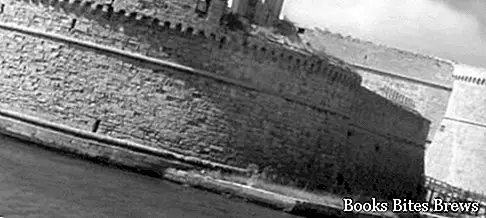What to see in Gallipoli, one-day itinerary including the main monuments and places of interest, including Castello Angioino, Cathedral Sant'Agata, Church of Purità, Greek Fountain, Hypogeum Oil Mill and Baia Verde beach.
Tourist information
Gallipoli is an Apulian town that juts out into the Ionian Sea along the western coast of Salento.
A bridge dating back to the seventeenth century connects the islet that houses the historic center of Gallipoli with the mainland, where the most modern part of this town founded by the Greeks extends with the name of kalé polis, which means "beautiful city".
The island is completely surrounded by a two-kilometer-long ramparts which enclose the old town with its narrow and winding alleys, full of charm.
A panoramic road, called the Riviera, which develops along the walls, allows you to stroll around the island.
At the entrance of the ancient village stands the Angevin Castle, a fortress of Byzantine origin that has been remodeled and enlarged over the centuries.
The manor, once a solid defensive structure, today is home to various cultural events.
In the historic center, at the highest point of the island, there is the seventeenth-century Cathedral of Sant'Agata, the most representative monument of the Baroque style in Gallipoli.
The design of the Basilica is by architect Giovan Bernardino Genuino, the facade, made of carparo, is embellished with numerous statues, while the interior is a Latin cross and divided into three naves, in Renaissance style but with typical vaults of the Lecce Baroque.
Inside, the Cathedral houses precious paintings from the seventeenth and eighteenth centuries.
What see
The church of the Purità, dating back to the seventeenth century and located in front of the Seno della Purità beach, was built at the behest of the brotherhood of the Bastasi, who were dockers.
Recommended readings- Trani (Puglia): what to see
- Puglia: Sunday day trips
- Manfredonia (Puglia): what to see
- Vieste (Puglia): what to see
- Altamura (Puglia): what to see
The external facade, quite simple, is characterized by the cornice made of exposed tuff and the majolica depicting the Virgin and Child, with Saint Joseph and Saint Francis of Assisi on the sides.
The single nave interior is a treasure trove of works of art, a true triumph of Baroque art.
In the small Civic Barba Museum, located in a nineteenth-century building of the ancient town, there are sections concerning various genres, including collections of weapons, period clothing, archeology, paintings and ceramics, numismatics, ornithology, pathological anatomy, minerals and more .
Leaving the historic center, near the bridge, on Corso Roma it is possible to admire the Greek Fountain, made of Lecce stone and enriched with remarkable bas-reliefs, which represent the three metamorphoses Dirce, Salmace and Biblide.
The bas-reliefs are of the classical age, while the frame that surrounds them dates back to the Baroque period.
Gallipoli had an illustrious past, especially from the sixteenth to the eighteenth century, when a type of oil called lampante was used in its port, destined to light the lamps of the main European capitals.
This particular fatty oil was produced in underground mills, dug in the limestone under some noble palaces of the city.
Among the over thirty oil mills listed, the underground oil mill of Palazzo Granafei, located near the Duomo, can be visited.
To the south of Gallipoli there is a very beautiful sandy coast called Baia Verde, bathed by a crystal clear sea with low water for several meters from the shore.




